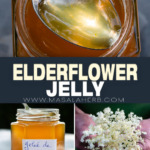
Elderflower jelly, prepared with freshly foraged elderflower blossoms.
This french jelly recipe requires pectin sugar to set, or use normal sugar to make an elderflower honey.

TL;DR
Elderflower are in season for a brief moment in spring in the Northern Hemisphere.
That means, the flowers are blossoming the end of May to mid-June. The time frame is heavily tied to altitudes and weather.
So when Elderflower are in season, we go out to forage for the flowers that grow in shrubs along river banks and pathways before they turn into berries.
Traditionally, in Austria, we prepare a cold Elderflower syrup. This syrup tastes refreshingly beautiful, especially in an Elderflower Gin Cocktail.
So, my French mother, who's great with jam and jelly's came up with an Elderflower jelly that tastes just like the syrup!

Ingredients
Because Elderflower doesn't contain natural pectin, we decided to make this recipe with jelling sugar (aka sugar with added pectin).
You can also use regular sugar, BUT your jelly will turn out liquid, like honey. A good example is my dandelion honey.
To Wash your Elderflower:
- Elderflower Heads — with open flowers and freshly foraged.
- Water
- Vinegar
For the Infusion:
- Water
- Orange — Juice and zest, organic untreated (no pesticides).
- Lemon — Juice and zest, organic untreated (no pesticides).
For the Jelly:
- Gelling Sugar (aka Jam Sugar in the UK) OR standard sugar with pectin added (i.e., Sure Jell) OR if you don't mind a liquid honey-like consistency, use standard sugar only. To make Jam (Gelling) Sugar combine 2 ¼ cups of standard sugar with ½ pack of sure jell pectin powder (that's the base recipe for this jelly).
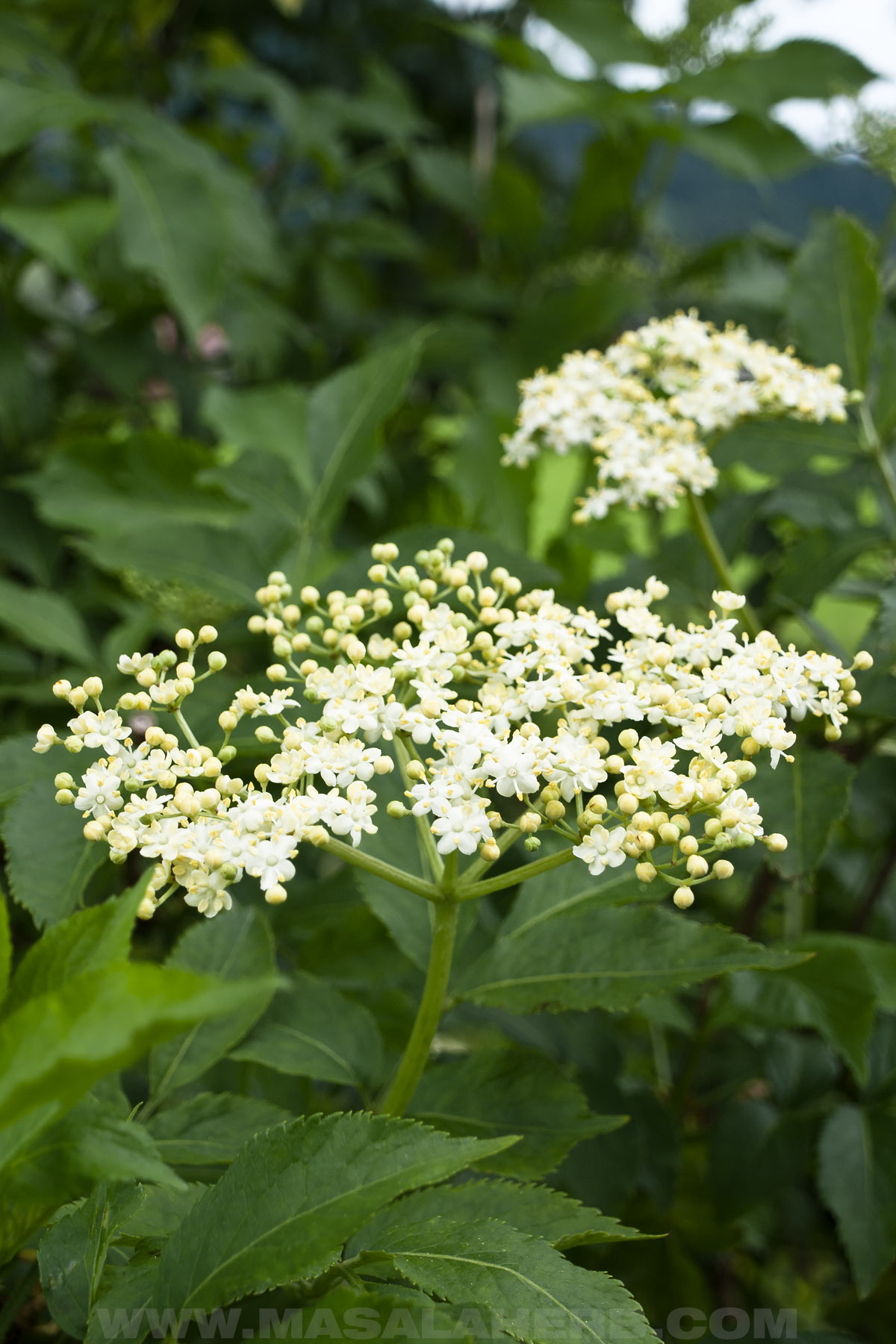

Tip: Use only a fresh orange or lemon to make this recipe, don't use bottled citrus juice. Use only fruits that have not been sprayed with pesticides because the zest is added to the infusion. Scrub citrus fruits in water with a dash of vinegar to get rid of chemicals.
How to make it?
Step 1
Pick your flower heads fresh from the shrub, the blossoms should be mostly open.
Place picked flower heads into a bowl or sink and add fresh water with a dash of vinegar. The vinegar kills insects and removes impurities.


Step 2
Break off the green flower stems as they are bitter and discard the green parts.
Collect flowers in a bowl.
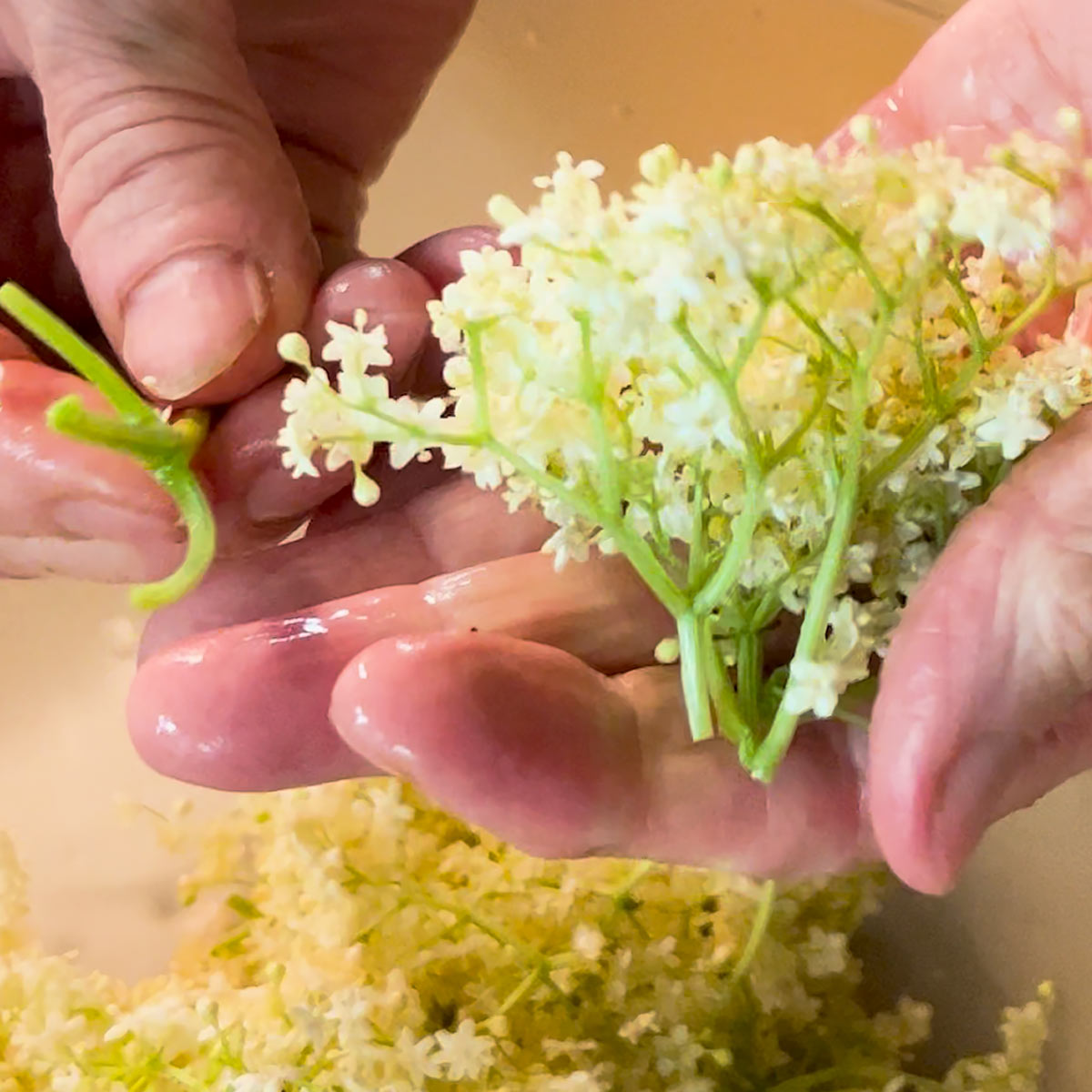

Step 3
Pour water over the flowers.
Zest the orange and lemon.
Cut both citrus fruits into two and juice them.


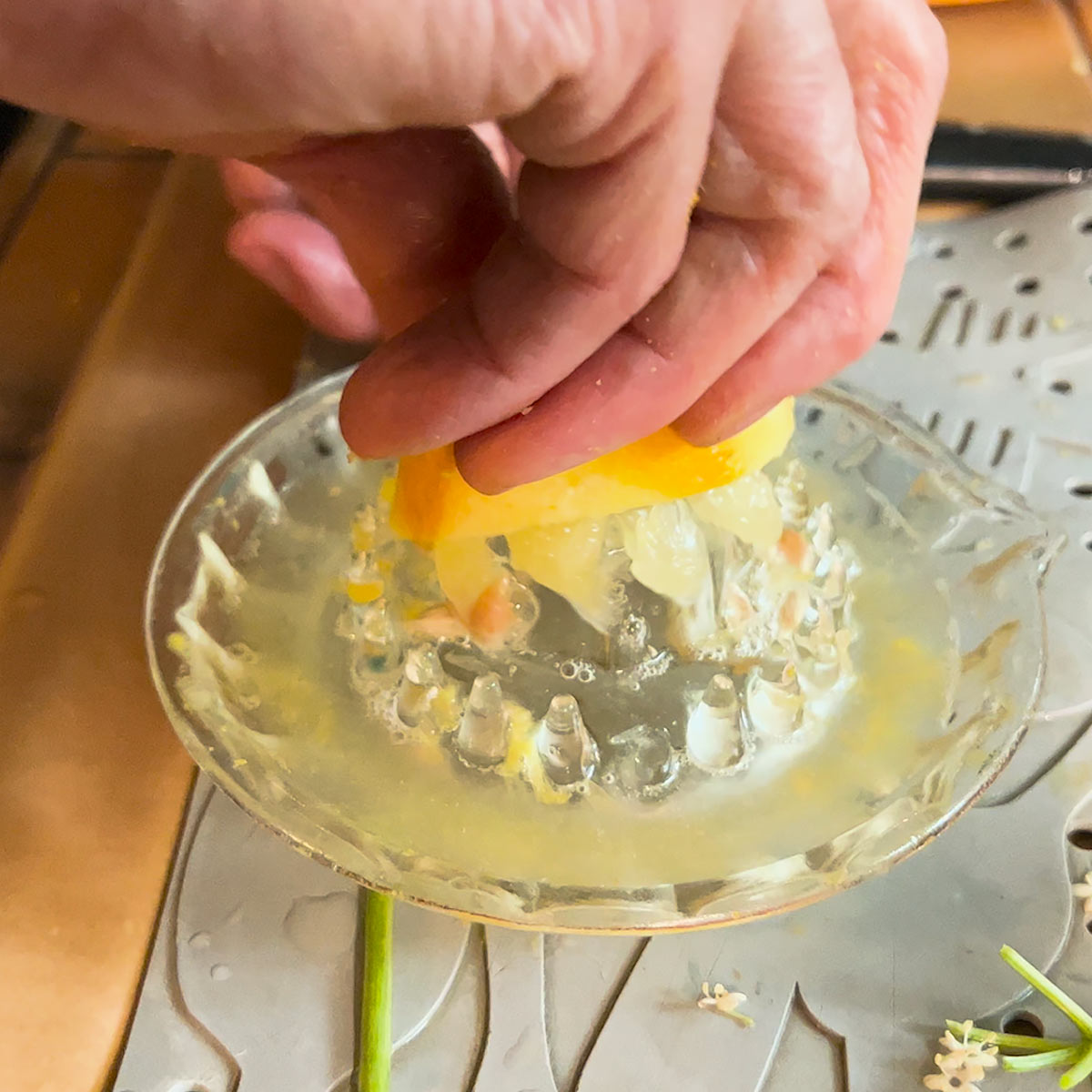
Step 4
Pour citrus juice over the flowers in the bowl, add the zest.
Submerge flowers, close the bowl with a lid, and leave to infuse for 24 to 48 hours in a cool place. The longer you infuse, the more flavorful it will turn out.

Step 5
Strain the infusion with a fine mesh strainer or muslin cloth (aka cheese cloth).
Collect the infusion and discard flower parts.


Step 6
Pour the flower infusion into a cooking pan and pour in all the sugar.
Place a small plate into your freezer. You will need it later to test if the jelly has set. Alternatively, you can also use a candy thermometer, with jelly setting at 220 Fahrenheit/105 Celsius.


Step 7
Keep the jelly over a medium to high heat setting and stir occasionally until it comes to a rolling boil.
Reduce heat and keep over a medium to low-heat setting to reduce the jelly until setting has been achieved. This will take at least 20 minutes.

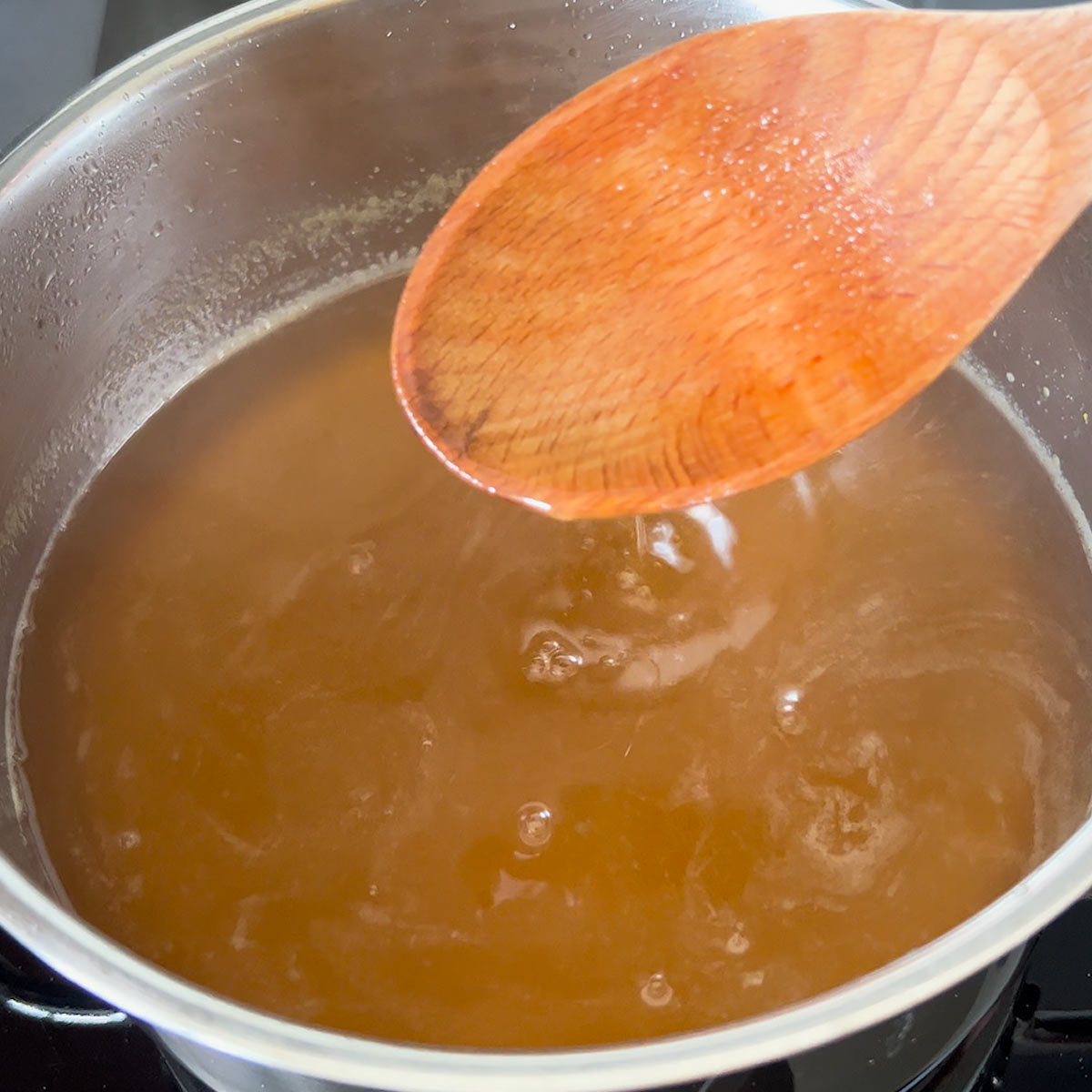
Step 8
The Jelly may appear set when it's translucent and shiny. Test the setting status by dropping some jelly on a plate. If it doesn't run, it's set.
If it runs, keep on the heat for longer and repeat the setting test with the cold plate until it is set OR/AND use a candy thermometer.
Jelly sets at 220 Fahrenheit/105 Celsius.

Step 9
Pour hot jelly into clean sterilized jars up to the rim. Clean the jar with a Wettex if you splattered jelly.
Close the jar with a tight lid and turn upside down to create a vacuum. Return jar when the jelly has cooled down and store on a shelf or use.



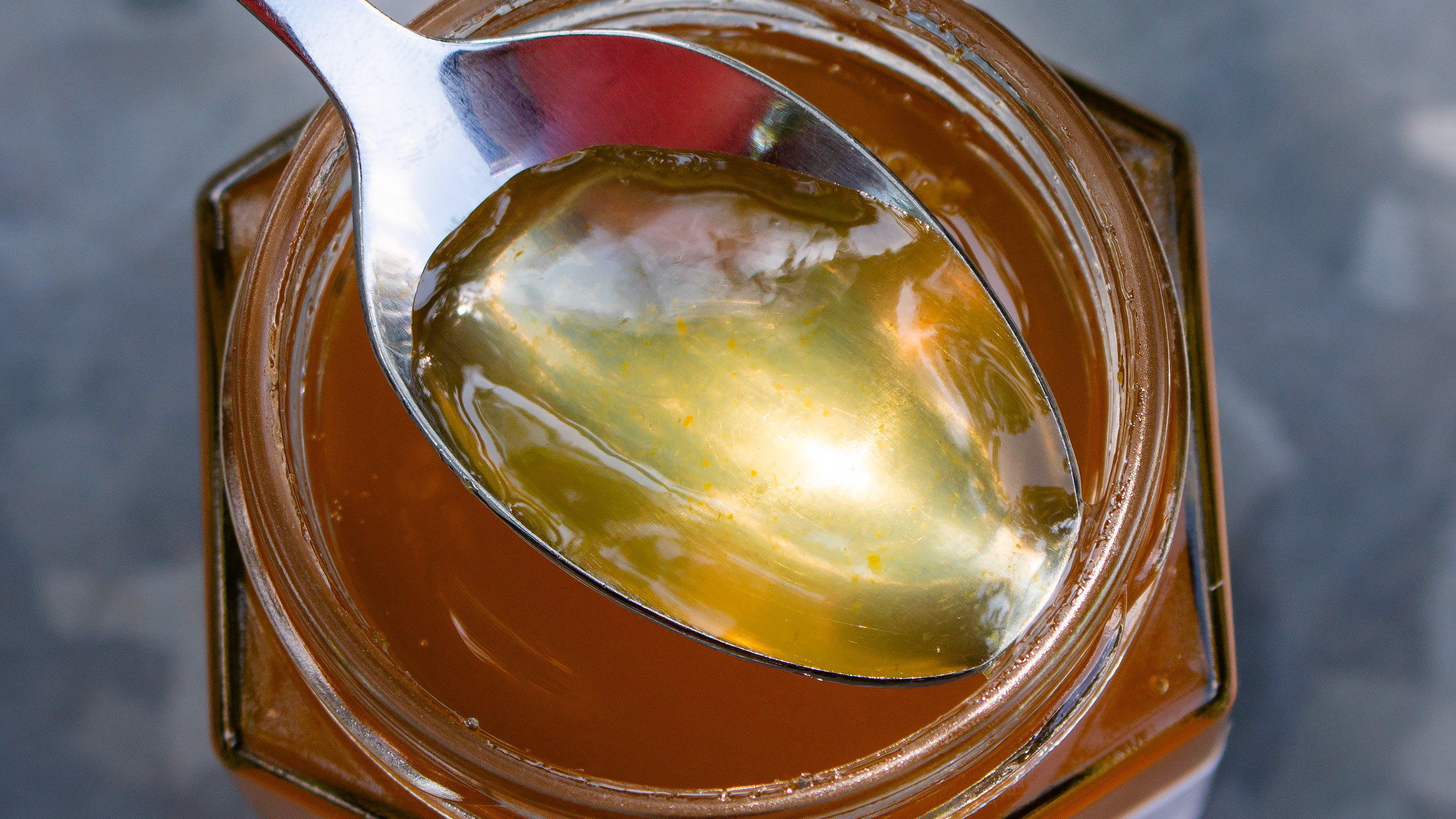
📖 Recipe

Elderflower Jelly Recipe
Ingredients
To Wash your Elderflower:
- 20 medium-sized Elderflower Heads the flowers need to be open
- Water fresh
- dash Vinegar as in distilled or white wine vinegar
For the Infusion:
Instructions
To Wash your Elderflower:
- Pick your elderflower heads from a shrub. Count the exact quantity that you need (*see Notes for size variation). Collect in a bag or bowl and take them home.20 medium-sized Elderflower Heads
- Directly place fresh flowers into a large bowl or into your sink and top up with fresh water. Pour in a dash of vinegar and mix it all. Leave your flowers for 2-3 minutes in the vinegar water to wash, so that insects fall off. You need to add more vinegar if you have countless lice on your flowers. The flowers cannot be stored, they have to be directly processed.Water, dash Vinegar
- Take elderflower through fresh water to rinse off and then break off the green stem. The stem is bitter and needs to be discarded.
For the Infusion:
- Place clean flowers into a large bowl with a lid.
- Pour water over the flowers.2 cups Water
- Zest clean orange and lemon and juice them both. Add zest and juice to elderflower in the bowl.1 Orange, 1 Lemon
- Submerge flowers and close the bowl with a lid. Keep the bowl in a dry, cool place for 1–2 days. The longer, the better it will infuse.
For the Jelly:
- Keep a small plate in the freezer. This will be your plate to test if the jam is set later on.
- Strain the infused flower water. Take it through a fine mesh strainer or a muslin cloth (cheesecloth). There should be no visible flower pieces left in the infusion.
- Pour infused flower water into a jam pan. Add gelling sugar to that. If you are using sure jell, get standard (plain) sugar and add to that the sure jell. (see Notes for quantity details). You can also use just standard sugar, but the jelly won't set and will turn out like a honey instead.2¼ cups Jam Sugar
- Bring to a rolling boil and keep the pan over medium-high heat setting. Stir occasionally with a long handled wooden spoon.
- Once it boils, reduce the heat to a medium-low setting and leave to cook. Cook down the jelly until it looks translucent and somewhat set. Cooking down will take about 30 minutes in total, from measuring to the first setting test, but this is not set in stone!
- Test if the jelly is set by dropping some hot liquid jelly on the ice-cold plate. If it runs, it needs more cooking time. Cook down further and repeat the test until the jelly is not runny anymore on the ice-cold plate. Simultaneously, you can test the setting temperature with a candy thermometer. Jelly sets at 220 Fahrenheit/105 Celsius.
- When the jelly is set, pour the jelly into clean sterilized jars (you can use a wide-mouthed jam funnel to help you pour it in). Clean up with a wettex sponge and hold the jar with a cloth because it's hot to close tight with a lid.
- Turn the tightly closed jars upside down to create a vacuum. This helps the shelf-life. When the jelly has cooled down, turn them back up and store them on a shelf or use and enjoy it.
Notes
- You can use 2 x 12 ounce (360 ml) jars or 4 x 6 ounce (180 ml) jars.
- Forage for fresh elderflower heads. They should be medium-sized. If they are smaller, pick a few extra to add to your infusion, if they are larger, reduce the quantity a bit.
- Use only untreated, pesticide-free orange and lemon because you need to freshly zest the citrus fruits, and you don't want chemicals in your jelly.
- You can use jam (gelling) sugar, how we use in Europe, which is standard sugar mixed with powdered pectin (i.e., sure Jell). For the base recipe with 2 ¼ cups of sugar, use ½ pack sure jell. If you live anywhere else in the world, get powdered pectin and follow the label instructions. If you are using European Jam Gelling Sugar, always get 1:1 gelling sugar (there is also 1:2 and 1:3 and those won't set with a jelly).
Equipment
- Zester To zest orange and lemon
- Jam Pan (copper) Or steel. It has to be a tall pan because jelly splatters.
- Silicone Spatula To help you scrape out all the jelly from the pan
- 2 12 oz Canning Jars Or 4 x 4 oz Canning jars
- Soup Ladle To pour jelly into jars.
- Wide Mouth Funnel Optional. Makes it easier to pour jelly into jar.
- Wettex Absorbent Sponge To clean jars if you made a mess.
Nutrition
Tips
Making Jelly from scratch can be daunting and things can go south if you don't follow the measurements or instructions properly.
You will succeed with these tips!
- Gelling Sugar is common in Europe. It's simply standard sugar with 1:1 pectin powder combined (i.e., Sure Jell). If you want to use European Gelling sugar, only use 1:1 gelling sugar and not 1:2 or 1:3. That means 1 kg of sugar for 1 kg of fruit or infusion.
- Don't ever lower the sugar quantity in your jelly. The sugar is what makes the jelly set, and it helps to preserve the elderflower jelly.
- I advise using a copper pan because the heat is equally spread. Steel is your next best option. The French traditionally use copper pans.
- If this is your first time making a jelly, use a candy thermometer to determine the setting point, together with the ice-cold plate method.
- Hot jelly is liquid because it's hot, so when you drop some on an ice-cold plate, it cools down instantly and reveals its true consistency.
- If the jelly doesn't run on the plate, it is ready. If your jelly is running, cook it further down for another 5 to 10 minutes and then test it again.
- You can sterilize your jars and lids by boiling them in hot water, or by placing them in the oven at a lower heat temperature, or I simply wash my jars in the dishwasher at a higher heat setting.


FAQs
The setting temperature is 220 Fahrenheit/105 Celsius. I recommend that you do the ice-cold plate test too.
It takes about an hour to extract the juice and cook it with sugar, on average. That's not a set rule. The appearance of the elderflower jelly when it's hot can be misleading, as it appears liquid in a hot state. So do the test!
No, you can't. The main ingredient in this jelly is sugar.
Storing
Store on a shelf in a dry and cool place away from direct sunlight.
Keep the jar in the fridge after you open it.
If you work in a clean environment with sterilized jars and lids, your jelly will last for over 10 years.
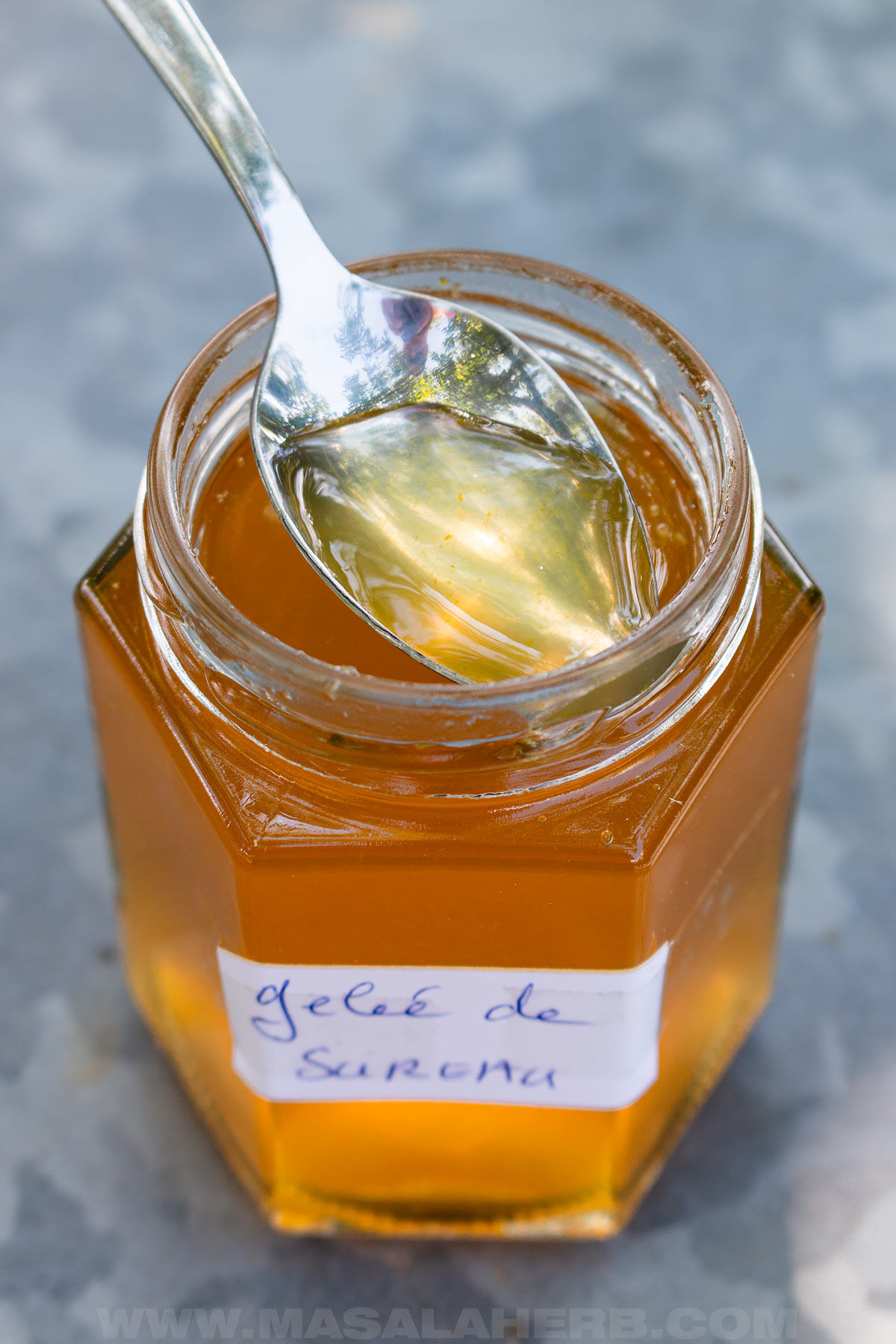

Serving
A classic use for your jelly is spread over a slice of bread or a bun. This makes for a great breakfast.
Add a dollop of elderflower jelly to your plain, unflavored yogurt. My mum likes this as an evening dessert, and she makes her own yogurt.
Another idea is to serve your blossom infused bright jelly with cheese and cold cuts as part of a cheese or meat board.
I haven't tried it yet, but it would pair well with a pepper goat cheese log during the holidays.
Instead of fig or any other jam, spread elderflower jelly over your baked brie or hot ricotta dip.
Use this jelly instead of red currant jelly to make Linzer Augen cookies or Thumbprint cookies.


